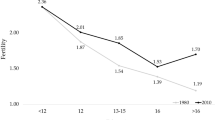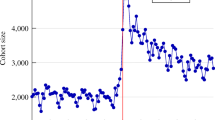Abstract.
This paper presents a dynamic model of fertility decisions in which children serve as an incomplete insurance good. The model incorporates uncertainty about future income and the survival of children as well as a discrete representation of the number of children. It contributes to the understanding of the negative relation between fertility and education, shows why parents may demand children even if the return is negative, and explains why fertility might rise with increasing income when income is low and decrease when income is high. Furthermore, the model can account for the decline in fertility when the risk of infant and child mortality decreases. Finally, the implications for empirical tests of the demand for children are also examined.
Similar content being viewed by others
Author information
Authors and Affiliations
Additional information
Received: 8 September 1998/Accepted: 9 June 1999
Rights and permissions
About this article
Cite this article
Pörtner, C. Children as insurance. J Popul Econ 14, 119–136 (2001). https://doi.org/10.1007/s001480050162
Issue Date:
DOI: https://doi.org/10.1007/s001480050162




